The Towering Inferno
7.2 /10 1 Votes
71% Rotten Tomatoes Duration Language English | 6.9/10 IMDb 3/4 Roger Ebert Genre Action, Drama, Thriller Budget 14 million USD Country United States | |||||||||||||||||||||||||||||||||
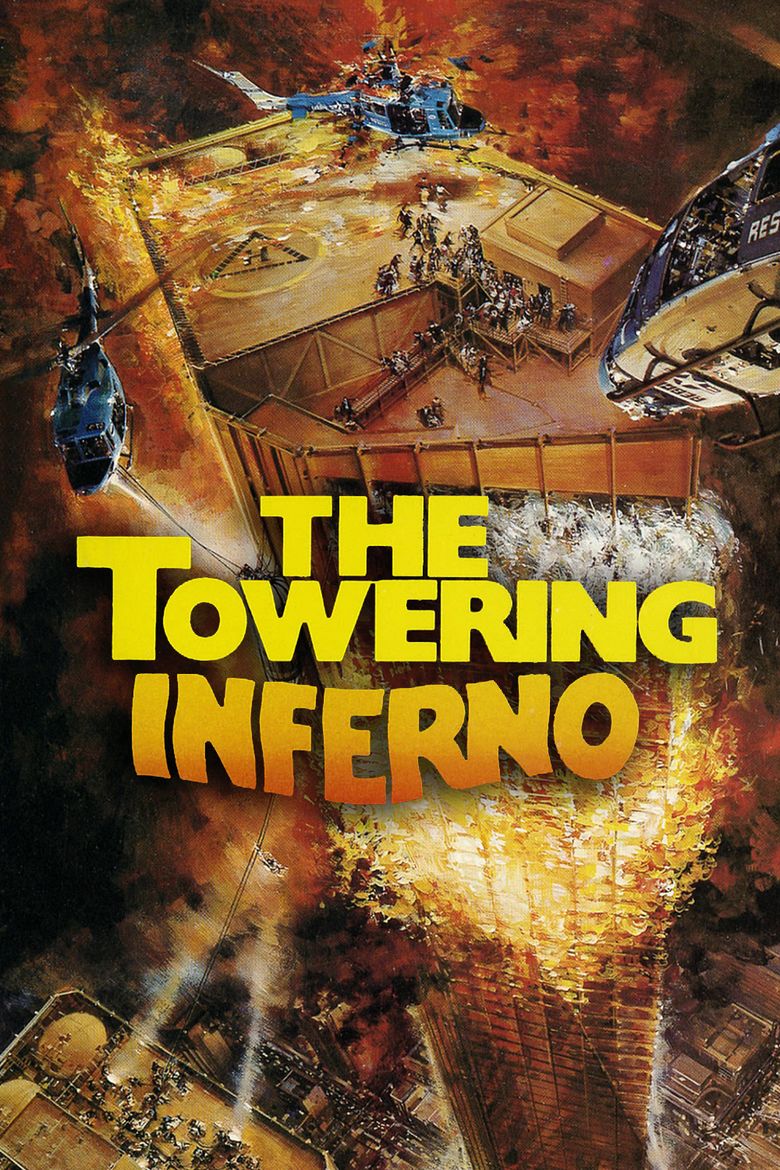 | ||||||||||||||||||||||||||||||||||
Release date December 14, 1974 Based on The Tower by Richard Martin Sternand The Glass Inferno byThomas N. ScortiaFrank M. Robinson Writer Richard Martin Stern (novel), Thomas N. Scortia (novel), Frank M. Robinson (novel), Stirling Silliphant (screenplay) Cast (Chief Michael O'Hallorhan), (Doug Roberts), (Susan Franklin), (Gary Parker), (James Duncan), O.J. Simpson (Jernigan)Similar movies Terminator 3: Rise of the Machines , World Trade Center , 2012 , 127 Hours , Cloverfield , A View to a Kill Tagline The world's tallest building is on fire. You are there on the 135th floor... no way down... no way out. | ||||||||||||||||||||||||||||||||||
The towering inferno trailer modernized
The Towering Inferno is a 1974 American action drama disaster film produced by Irwin Allen featuring an all-star cast led by Paul Newman and Steve McQueen. The picture was directed by John Guillermin. A co-production between 20th Century Fox and Warner Bros., it was the first film to be a joint venture by two major Hollywood studios. It was adapted by Stirling Silliphant from a pair of novels, The Tower by Richard Martin Stern and The Glass Inferno by Thomas N. Scortia and Frank M. Robinson.
Contents
- The towering inferno trailer modernized
- The towering inferno trailer
- Plot
- The Books
- Casting
- McQueen and Newman
- Fred Astaire
- Music
- Critical reception
- Legacy
- Release
- References
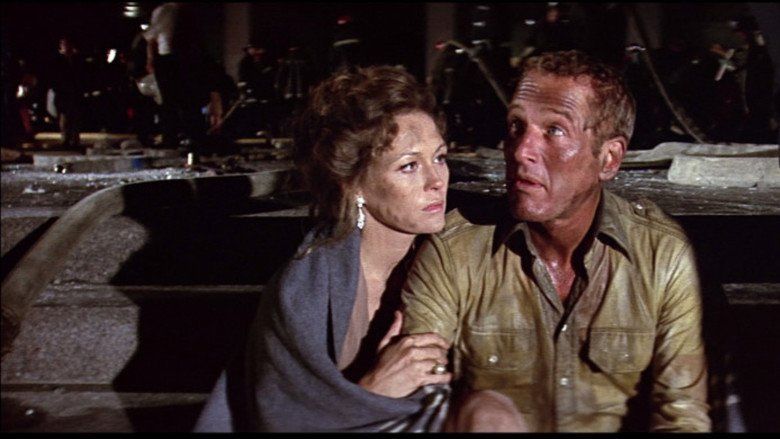
The film was a critical success, earning a nomination for the Academy Award for Best Picture, and was the highest-grossing film released in 1974. The film was nominated for eight Oscars in all, winning three. In addition to McQueen and Newman, the cast includes William Holden, Faye Dunaway, Fred Astaire, Susan Blakely, Richard Chamberlain, O. J. Simpson, Robert Vaughn, Robert Wagner, Susan Flannery, Gregory Sierra, Dabney Coleman and, in her final film, Jennifer Jones.
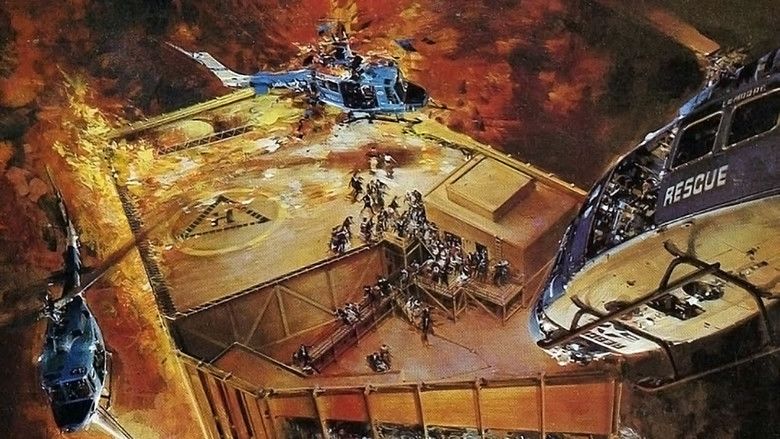
The towering inferno trailer
Plot
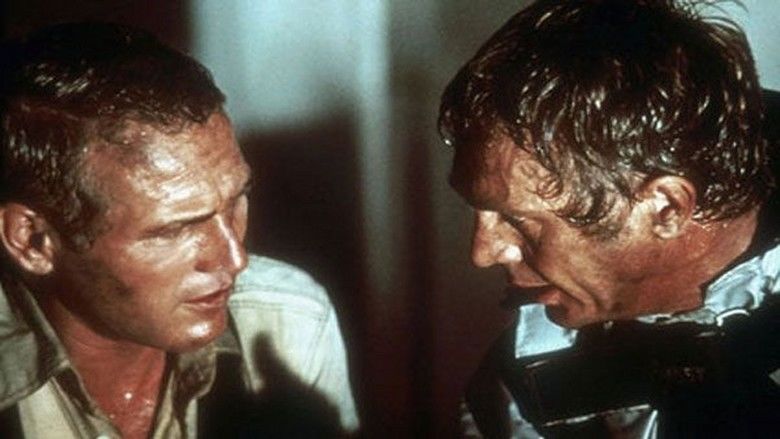
Architect Doug Roberts returns to San Francisco for the dedication of the Glass Tower, which he designed for James Duncan. At 138 stories, it is the world's tallest building. An electrical short starts an undetected fire on the 81st floor. Roberts suspects the electrical engineer, Roger Simmons, also Duncan's son-in-law, of cutting corners and confronts him, but Simmons stonewalls Doug.
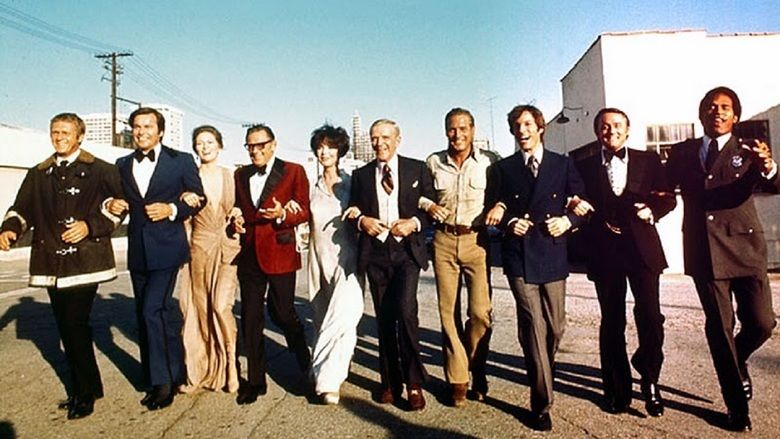
During the dedication ceremony, public relations chief Dan Bigelow turns on the tower's exterior lights. The lighting overloads the electrical system and Roberts orders it shut off. Smoke is seen on the 81st floor and the San Francisco Fire Department (SFFD) is summoned. Roberts and engineer Will Giddings go to the 81st floor, but Giddings is hospitalized due to burn injuries, which later claim his life.
Roberts reports the fire to Duncan, who refuses to order an evacuation. Inadequately-equipped firefighters arrive to tackle the blaze, which spreads out of control. SFFD Chief Michael O'Halloran forces Duncan to evacuate the guests in the Promenade Room on the 135th floor, directing them to express elevators. A guest, Lisolette Mueller, who is being wooed by con man Harlee Claiborne, rushes to the 87th floor to check on a young family. Simmons admits to Duncan that he cut corners, but at a time when Duncan overbudgeted construction and ordered subcontractors back under budget.
Duncan, aided by Senator Parker and Mayor Ramsey, directs the elevator evacuation from the Promenade Room until the fire renders the express elevators unsafe. Not heeding Duncan's directions, a group is killed when their elevator stops on the fire's floor. Bigelow is having an affair with his secretary Lorrie, and both get killed when the fire traps them on the 65th floor. Parker recommends using the stairs to escape, but the fire exit from the Promenande Room is blocked by a wheelbarrow full of hardened cement.
Security Chief Harry Jernigan and Roberts rescue Mueller and the family from 87. Jernigan gets the mother out safely but Roberts, Mueller, and the two children are halted by a collapsed stairwell. They climb down the stairs but fire forces them up to the Promenade Room. Electrical power is lost and O'Halloran's men are forced to rappel down an elevator shaft.
The Navy deploys a rescue helicopter, but a combination of strong winds and stampeding guests cause the helicopter to crash, setting the helipad ablaze. Naval rescue teams attach a breeches buoy to an adjacent skyscraper and rescue a number of guests, including Patty Simmons, Duncan's daughter. Roberts rigs a gravity brake on the external scenic elevator allowing twelve people, including Mueller, the children, and a fireman one trip down, with the remaining eight being ladies chosen by lottery, including Roberts' girlfriend Susan. An explosion leaves the elevator hanging by a single cable, where Mueller falls to her death. A Navy helicopter saves the rest.
Simmons tells Duncan that he will use the breeches buoy next, but Duncan punches him, saying the men will draw numbers but he and his son-in-law will be the last to leave. The fire reaches the Promenade Room and Simmons forces his way onto the buoy, leading to a struggle. Parker is pushed to his death by Simmons. An explosion severs the lines to the breeches buoy, causing Simmons and others to fall to their deaths.
O'Halloran and Roberts set explosives on the water tanks atop the building to extinguish the fire. The remaining guests tie themselves down. O'Halloran, Roberts, Duncan, Claiborne and most of the party-goers survive as water rushes through the building, extinguishing the flames.
Claiborne learns that Mueller did not survive and is heartbroken. Jernigan gives him Mueller's pet cat. Duncan consoles Patty over her husband's death (but does not reveal the reason behind his demise). Duncan promises that such a tragic debacle will never happen again. Roberts says to Susan that he does not know what will become of the building, and perhaps it should be left in its fire-damaged state. Informing Roberts that the casualty toll numbered less than 200, O'Halloran says they were lucky. Roberts agrees to consult with fire officials in the future when such buildings are designed. O'Halloran drives away, exhausted.
The Books
Warner Brothers outbid Fox to obtain the rights to Stern's The Tower for $400,000. Fox, in turn, spent $300,000 to obtain the rights to Scortia's The Glass Inferno. Irwin Allen realized that two films about a tall building on fire would cannibalize each other (as actually happened a couple decades later in the case of the two films about active volcanoes, released nearly simultaneously, Volcano (released by Fox) and Dante's Peak (released by Universal)), convinced executives at both studios to join forces to make a single film on the subject. The studios issued a joint press release announcing the single film collaboration in October, 1973.
The total cost for the film was US$14,300,000. The two studios agreed to split the box office revenues, Fox getting all U.S. receipts while Warner Brothers getting all foreign revenues.
Casting
Several actors who appeared in small roles, including John Crawford, Erik Nelson, Elizabeth Rogers, Ernie Orsatti, and Sheila Matthews, had previously appeared in The Poseidon Adventure, which Irwin Allen also produced. (Allen and Matthews were husband and wife.) Paul Newman's son Scott played the acrophobic fireman afraid to rappel down the elevator shaft.
McQueen and Newman
McQueen, Newman, and William Holden all wanted top billing. Holden was refused, his long-term standing as a box office draw having been eclipsed by both McQueen and Newman. To provide dual top billing, the credits were arranged diagonally, with McQueen lower left and Newman upper right. Thus, each appeared to have "first" billing depending on whether the credit was read left-to-right or top-to-bottom, the first of countless times in which billing would be displayed this way in films. McQueen is mentioned first in the film's trailers. In the cast list rolling from top to bottom at the film's end, however, McQueen and Newman's names were arranged diagonally as at the beginning; as a consequence, Newman's name is fully visible first there.
McQueen and Newman were promised the same pay and number of lines, which meant that one had to shoot additional scenes to equalize the dialog.
Fred Astaire
Although famed for his dancing and musical comedy movies, Fred Astaire received his only Academy Award nomination for this film. He also won both a BAFTA Award and Golden Globe award for his performance.
Music
The score was composed and conducted by John Williams, orchestrated by Herbert W. Spencer and Al Woodbury, and recorded at the 20th Century Fox scoring stage on October 31 and November 4, 7 and 11, 1974. The original recording engineer was Ted Keep.
Source music in portions of the film includes instrumental versions of "Again" by Lionel Newman and Dorcas Cochran, "You Make Me Feel So Young" by Josef Myrow and Mack Gordon, and "The More I See You" by Harry Warren and Mack Gordon.
A snippet of a cue from Williams’ score to Cinderella Liberty titled 'Maggie Shoots Pool' is heard in a scene when William Holden's character converses on the phone with Paul Newman's character. It is not the recording on the soundtrack album but a newer arrangement recorded for The Towering Inferno. An extended version is heard, ostensibly as source music in a deleted theatrical scene sometimes shown as part of a longer scene from the TV broadcast version.
One of the most sought-after unreleased music cues from the film is the one where Williams provides low-key lounge music during a party prior to the announcement of a fire. O’Halloran orders Duncan to evacuate the party; the music becomes louder as Lisolette and Harlee are seen dancing and Duncan lectures son-in-law Roger. Titled "The Promenade Room" on the conductor's cue sheet, the track features a ragged ending as Duncan asks the house band to stop playing. Because of this, Film Score Monthly could not add this cue to the expanded soundtrack album.
The Academy Award-winning song "We May Never Love Like This Again" was composed by Al Kasha and Joel Hirschhorn and performed by Maureen McGovern, who appears in a cameo as a lounge singer and on the score's soundtrack album, which features the film recording plus the commercially released single version. Additionally, the theme tune is interpolated into the film's underscore by Williams. The song's writers collaborated on "The Morning After" from The Poseidon Adventure, an Academy Award-winning song which was also recorded by McGovern, although hers was not the vocal used in that film.
The first release of portions of the score from The Towering Inferno was on Warner Bros. Records early in 1975 (Catalog No. BS-2840)
- "Main Title" (5:00)
- "An Architect's Dream" (3:28)
- "Lisolette And Harlee" (2:34)
- "Something For Susan" (2:42)
- "Trapped Lovers" (4:28)
- "We May Never Love Like This Again" – Kasha/Hirschhorn, performed by Maureen McGovern (2:11)
- "Susan And Doug" (2:30)
- "The Helicopter Explosion" (2:50)
- "Planting The Charges – And Finale" (10:17)
A near-complete release came on the Film Score Monthly label (FSM) on April 1, 2001 and was produced by Lukas Kendall and Nick Redman. FSM's was an almost completely expanded version remixed from album masters at Warner Bros. archives and the multi-track 35mm magnetic film stems at 20th Century Fox. Placed into chronological order and restoring action cues, it became one of the company's biggest sellers; only 4000 copies were pressed and it is now out of print.
Reports that this soundtrack and that of the film Earthquake (also composed by Williams) borrowed cues from each other are inaccurate. The version of "Main Title" on the FSM disc is the film version. It differs from the original soundtrack album version. There is a different balance of instruments in two spots, and in particular the snare drum is more prominent than the album version which also features additional cymbal work. Although the album was not a re-recording, the original LP tracks were recorded during the same sessions and several cues were combined. The film version sound was reportedly better than the quarter-inch WB two-track album master. Although some minor incidental cues were lost, some sonically 'damaged' cues – so called due to a deterioration of the surviving audio elements – are placed at the end of the disc's program time following the track "An Architect's Dream" which is used over the end credits sequence.
Critical reception
The Towering Inferno met with positive reviews from critics, garnering a 71% "Fresh" rating on the review aggregator website Rotten Tomatoes. Roger Ebert of the Chicago Sun-Times praised the film as "the best of the mid-1970s wave of disaster films".
Legacy
American Film Institute lists
Release
The Towering Inferno was released in theatres on December 14, 1974. The film was released on DVD on April 15, 2003, initially and later on May 9, 2006, as a special edition by 20th Century Fox.
References
The Towering Inferno WikipediaThe Towering Inferno IMDbThe Towering Inferno Rotten TomatoesThe Towering Inferno Roger EbertThe Towering Inferno themoviedb.org
